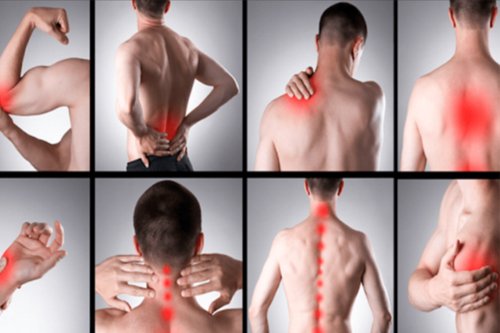Meet Our Doctor
Dr. Vrushabh Kumbhare
Orthopedic and Joint Replacement Surgeon
Educational details:
- M.B.B.S. (4.5 years +1 year Internship): August 2009 - April 2015 N K P Salve institute of medical sciences and research centre, Digdoh hills, Nagpur, Maharashtra (Under Maharashtra University of Health Sciences, Nashik)
- M.S. Orthopedics(3 years): May 2017- August 2020 Jawaharlal Nehru Medical Collage, Sawangi (Meghe) (Under Datta Meghe Institute of Medical Sciences Deemed to be University)
Experience:
- Senior resident: (September 2019 – May 2021) Department of Orthopaedics, Jawaharlal Nehru Medical Collage, Sawangi (Meghe)


Dr. Vrushabh Kumbhare
Orthopedic and Joint Replacement Surgeon
Joint Pain Treatment In Nagpur
The treatment for joint pain depends on the underlying cause of the pain. Joint pain can result from various conditions, including arthritis, injuries, inflammation, or other medical issues. Feel free to visit our clinic and schedule an appointment.
Joint pain refers to discomfort, aching, or soreness in any of the joints, which are the areas where two or more bones meet. Joint pain can range from mild to severe and may be acute (short-term) or chronic (long-lasting). Thus, It can affect one joint or multiple joints and may be accompanied by inflammation, swelling, stiffness, or reduced range of motion. Joint pain can range from mild to severe and may be acute (sudden and temporary) or chronic (long-lasting). Once, It can affect one or more joints and can be caused by various factors.

Common causes of joint pain
Arthritis: Thus, Conditions like osteoarthritis, rheumatoid arthritis, and gout can lead to joint pain. Thus, These conditions involve inflammation and damage to the joints.
Injuries: Therefore, Trauma, such as fractures, dislocations, or sprains, can cause joint pain. The pain may be acute and usually resolves as the injury heals.
Overuse or Strain: Thus, Repetitive movements or overuse of a joint, particularly in activities or occupations that involve frequent joint stress, can lead to pain and discomfort.
Infections: Thus, Joint pain can result from infections such as septic arthritis, where the joint becomes infected and inflamed.
Autoimmune Disorders: Once, Diseases where the immune system mistakenly attacks the body’s own tissues, such as lupus or certain types of arthritis, can cause joint pain.
Bursitis: Therefore, Inflammation of the fluid-filled sacs (bursae) that cushion joints can lead to pain and swelling.
The procedure commonly followed for managing joint pain
Medical Evaluation:
- Consult with a healthcare professional, such as a primary care physician, rheumatologist, or orthopedic specialist, to discuss your joint pain symptoms. A thorough medical history, physical examination, and possibly imaging tests may be conducted to determine the cause of the joint pain.
Diagnosis:
- Based on the evaluation, your healthcare provider will work to diagnose the specific condition causing the joint pain. This may involve blood tests, X-rays, MRIs, or other diagnostic imaging.
Medications
- Nonsteroidal anti-inflammatory drugs (NSAIDs) or pain relievers may be prescribed to alleviate pain and reduce inflammation.
- For inflammatory joint conditions like rheumatoid arthritis, disease-modifying antirheumatic drugs (DMARDs) may be recommended.
Pain Management Strategies
- Thus, Pain management techniques, including heat or cold therapy, topical analgesics, and assistive devices (e.g., braces or canes), may be recommended to manage pain on an ongoing basis.
Orthopedic Interventions
- In some cases, surgical interventions may be considered, such as joint replacement surgery for severe arthritis.
Lifestyle Modifications
- Changes in lifestyle, such as weight management, exercise, and joint protection strategies, may be advised.
Benefits of Joint Pain Treatment
Pain Relief:
- Thus, One of the primary goals of joint pain treatment is to alleviate pain, improving the overall quality of life for individuals experiencing discomfort.
Improved Functionality:
- Addressing the underlying issue and undergoing appropriate interventions. Once, such as physical therapy, can enhance the functionality of the affected joint and surrounding muscles.
Enhanced Mobility:
- Once, Successful treatment can result in increased joint mobility and range of motion, allowing individuals to move more comfortably and engage in daily activities without limitations.
Prevention of Further Damage:
- Thus, Timely intervention can prevent the progression of certain joint conditions or injuries, potentially avoiding more severe damage to the joint and surrounding structures.
Better Quality of Life:
- Firstly, Alleviating joint pain and improving joint function contribute to an overall improvement in an individual’s quality of life, allowing them to participate in activities, work, and recreational pursuits more comfortably.
